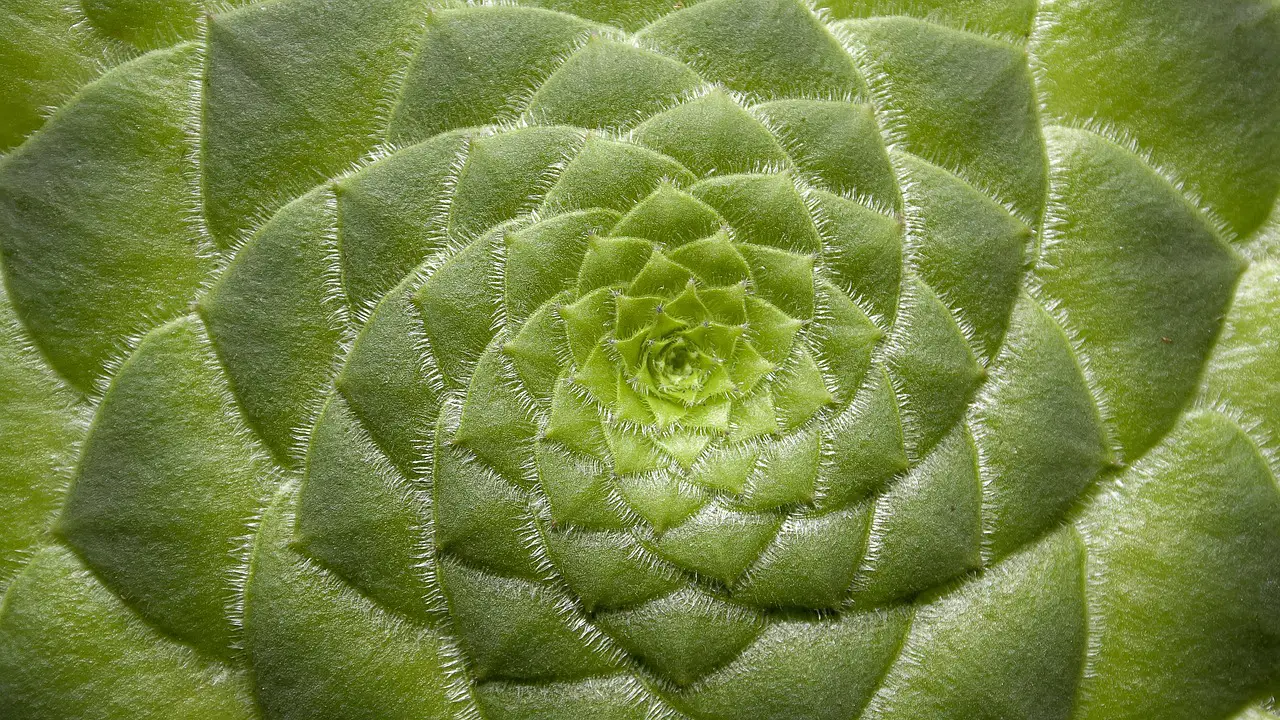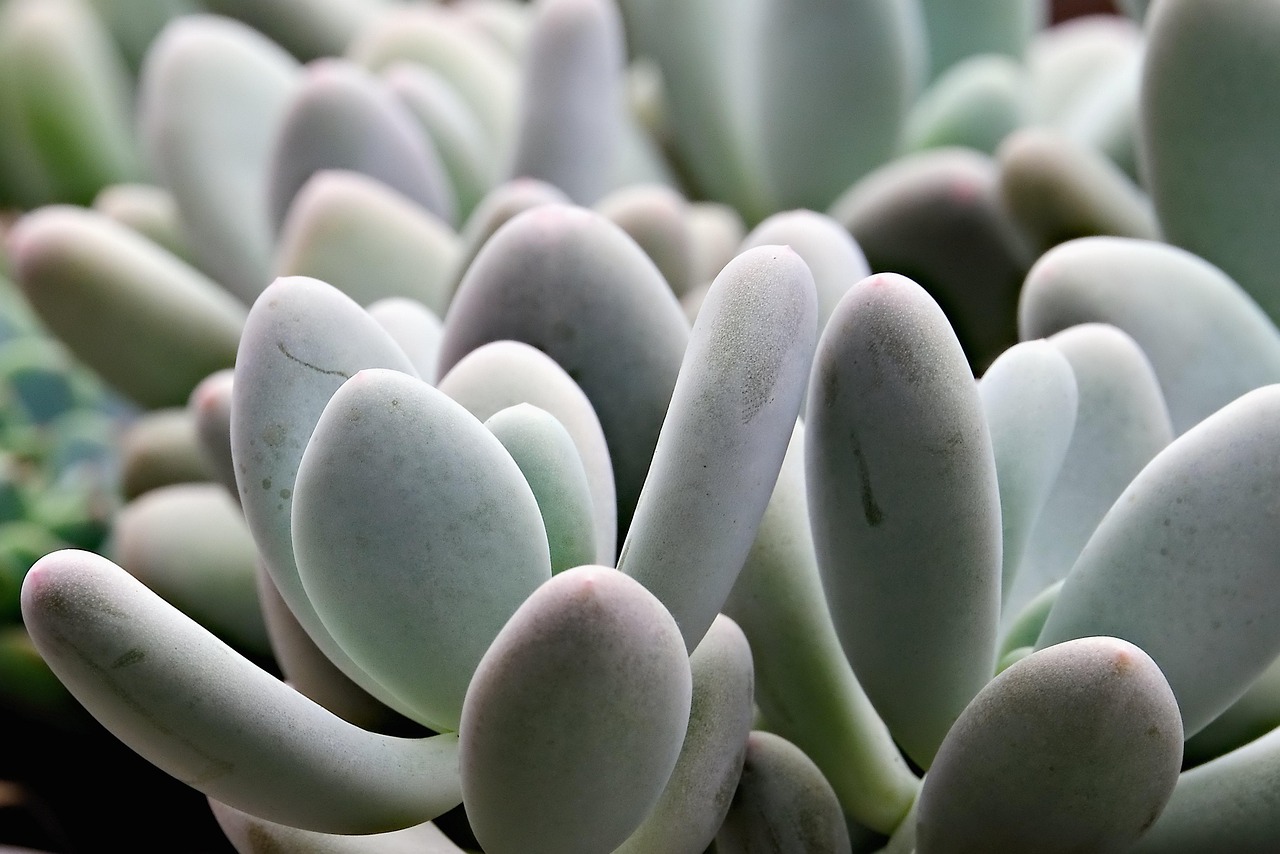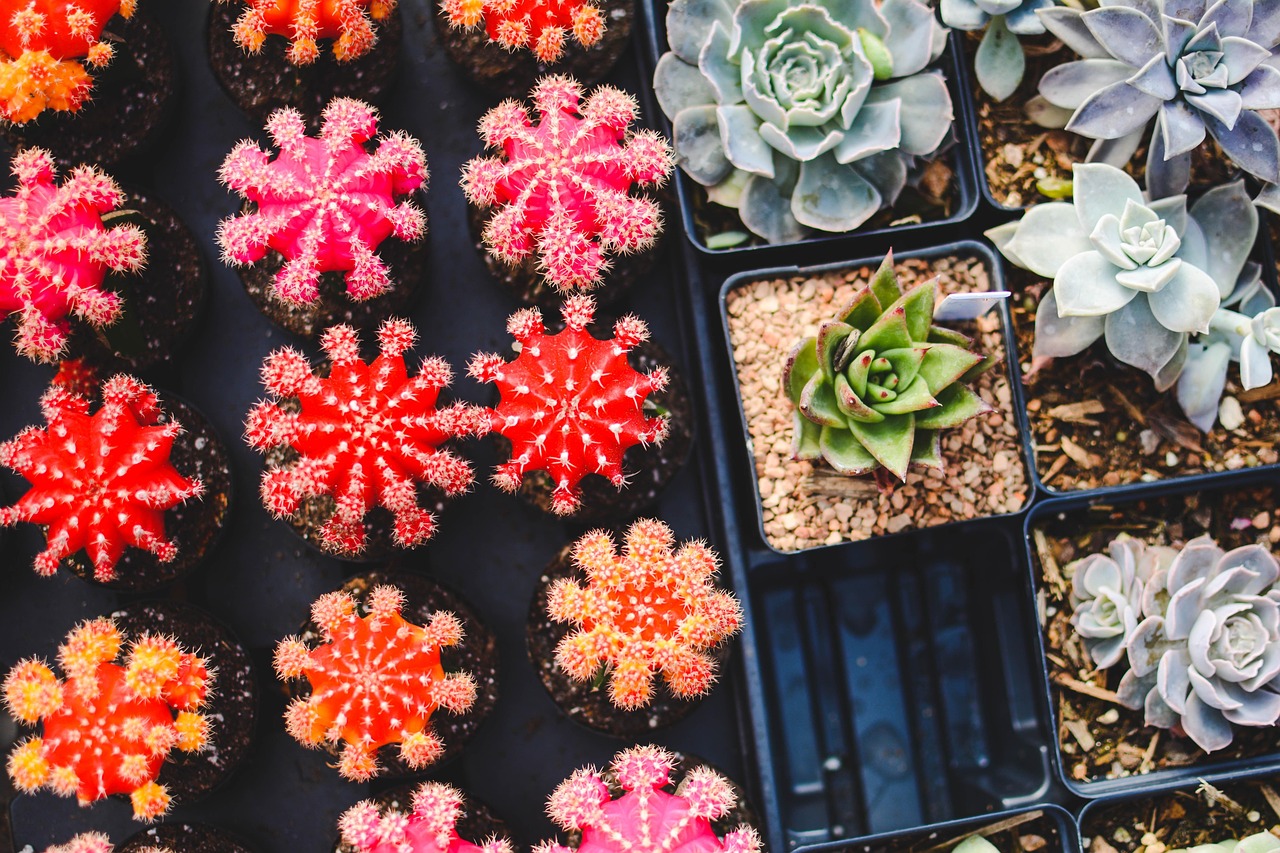Creating a succulent garden can transform any space into a vibrant oasis. With their diverse shapes and colors, succulents offer endless possibilities for design. Here are ten inspiring ideas that will ignite your creativity and help you incorporate these resilient plants into your garden.
Succulents are known for their ability to store water in their leaves, stems, or roots, making them low-maintenance and perfect for busy gardeners. They thrive in well-drained soil and require minimal watering, making them ideal for various climates. With the right arrangement and selection, succulents can enhance your outdoor or indoor spaces beautifully.

Before diving into the ideas, it’s helpful to know some of the most popular types of succulents you might want to include in your garden. Here’s a brief overview:
| Succulent Type | Description | Light Requirement |
|---|---|---|
| Aloe Vera | Known for its medicinal properties and thick, fleshy leaves. | Bright, indirect sunlight |
| Echeveria | Rosette-shaped leaves with vibrant colors. | Full sunlight |
| Jade Plant | A popular houseplant with glossy leaves that symbolize good luck. | Bright light |
| Hens and Chicks | Forms clusters of rosettes, easy to propagate. | Full sun |
| Sedum | A hardy ground cover with various colors and textures. | Full sun to partial shade |
10 Succulent Garden Ideas You’ll Want Right Now!
Your succulent garden can reflect your personal style. Here are ten creative ideas to inspire you:
1. Vertical Gardens
Create a stunning vertical succulent garden by using wall-mounted planters or repurposed pallets. This approach saves space and adds an artistic touch to your home or patio. Choose a variety of succulents with different colors and textures to create visual interest.
2. Succulent Wreaths
Design a beautiful succulent wreath that can serve as a centerpiece or wall decoration. Use a wire frame and attach various succulents with floral wire or glue. This idea is perfect for seasonal decorations or gifts.
3. Terrariums
Terrariums are an excellent way to showcase succulents indoors. Use glass containers of different shapes and sizes to create miniature landscapes. Add decorative stones, sand, or figurines for an extra touch.
4. Succulent Centerpieces
Transform your dining table with succulent centerpieces. Arrange several small pots or a large bowl filled with assorted succulents. This living decoration brings a fresh, natural look to any gathering.
5. Rock Gardens
Combine succulents with rocks, gravel, and stones in a rock garden design. This idea mimics their natural habitat and provides excellent drainage, which is crucial for succulent health. Use larger rocks as anchors with smaller plants nestled in between for contrast.
Each of these ideas allows for personal expression while celebrating the unique beauty of succulents. As you explore these concepts, consider how they can be tailored to fit your space and style.
6. Succulent Hanging Gardens
Hanging gardens are a beautiful way to utilize vertical space and showcase succulents creatively. You can use macramé hangers, wall-mounted containers, or even repurpose old colanders for a unique look. Here are some tips for creating your hanging garden:
- Select the Right Plants: Choose trailing succulents like String of Pearls or Burro’s Tail that will cascade down beautifully.
- Ensure Proper Drainage: Use pots with drainage holes to prevent root rot.
- Position Wisely: Hang your garden in a spot where it can receive sufficient light without being in direct sunlight for too long.
7. Succulent Pathways
Creating pathways lined with succulents can enhance your garden’s aesthetic appeal. This idea adds structure and guides visitors through your outdoor space. Here are some ways to implement succulent pathways:
- Bordering Pathways: Use low-growing succulents such as sedum or moss rose along the edges of stone or gravel paths.
- Integrate Hardscaping: Combine succulents with pavers or bricks to create a visually interesting and functional walkway.
- Add Texture: Mix various types of succulents to create a rich texture along the pathway.
8. Succulent Containers
Containers offer flexibility in designing your succulent garden. You can choose from a wide variety of pots, including ceramic, terracotta, metal, or recycled materials. Here are some ideas for container gardening:
- Theme Your Containers: Use containers that match your garden style. For example, rustic wooden boxes for a farmhouse look or sleek modern pots for a contemporary vibe.
- Group Plants by Size: Arrange larger succulents at the back of the container, with smaller varieties in the front for balance.
- Diverse Combinations: Mix different species, colors, and textures in one container for an eye-catching display.
9. Succulent Terraces
If you have a sloped yard, consider building terraces for your succulent garden. This approach not only prevents erosion but also creates visually stunning layers of plants. Here are some key points to keep in mind:
- Design with Purpose: Plan the layout of your terraces to ensure adequate sunlight and drainage.
- Select Hardy Varieties: Choose drought-tolerant succulents that can thrive in the terrace environment.
- Add Pathways: Include small paths between terraces for easy access and maintenance.
10. Seasonal Succulent Displays
Change your succulent arrangements with the seasons for a fresh look throughout the year. You can incorporate seasonal elements such as:
- Holiday Decor: Add festive ornaments or colored stones during holidays to make arrangements pop.
- Seasonal Colors: Choose succulents that reflect seasonal colors, such as deep reds and greens for winter or bright yellows and pinks for summer.
- Themed Arrangements: Create themes based on seasons, holidays, or even personal interests like beach themes with sand and shells.
The versatility of succulents makes them suitable for various design ideas. Whether you choose to build a hanging garden or create seasonal displays, there is an infinite number of ways to enjoy these unique plants in your space.
Care and Maintenance Tips for Your Succulent Garden

To keep your succulent garden thriving, it is essential to understand the specific care requirements of these unique plants. Proper attention can ensure that your succulents flourish and remain vibrant throughout the year. Below are some crucial care and maintenance tips to consider.
Watering Guidelines
One of the most critical aspects of caring for succulents is establishing a proper watering routine. Overwatering is a common mistake that can lead to root rot. Here are some guidelines to follow:
- Soil Moisture Check: Always check the moisture level of the soil before watering. Stick your finger about an inch deep into the soil; if it feels dry, it’s time to water.
- Water Deeply: When you water, do so deeply so that the water reaches the roots. Allow excess water to drain out completely.
- Adjust for Seasons: In hotter months, succulents may need more frequent watering, while in cooler months, reduce watering to prevent soggy soil.
Soil Selection
The right soil mix is vital for the health of your succulents. A well-draining soil will help prevent water accumulation around the roots. Consider the following options:
- Cactus Mix: Specialized cactus soil is a great option designed for good drainage and aeration.
- DIY Soil Mix: You can create your own mix using equal parts of potting soil, coarse sand, and perlite or pumice for enhanced drainage.
- Avoid Heavy Soils: Stay away from heavy garden soils that retain moisture, as they can cause succulents to rot.
Light Requirements
Succulents thrive in bright light but require different amounts depending on the species. Here are some tips for ensuring your plants receive adequate light:
- Direct Sunlight: Many succulents prefer at least six hours of direct sunlight daily. Place them near south-facing windows if indoors.
- Indirect Light: Some varieties, such as certain types of Echeveria, do better in indirect sunlight. Be mindful of their specific needs.
- Rotate Plants: Rotate your pots every few weeks to promote even growth and prevent leaning towards the light source.
Pest Management

While succulents are relatively low-maintenance, they can still be susceptible to pests. Regular monitoring and early intervention can keep your plants healthy. Here are common pests to watch for:
- Mealybugs: These tiny white pests often cluster in leaf axils. Remove them with a cotton swab dipped in rubbing alcohol.
- Aphids: Small and often green, aphids can damage succulent leaves. Spray them off with water or use insecticidal soap if needed.
- Spider Mites: Watch for fine webbing on plants. Increase humidity around your succulents or use horticultural oil to eliminate them.
Propagation Techniques

Propagating succulents is a rewarding way to expand your garden without spending much money. Here are some techniques you can use:
Leaf Cuttings
This method works well with many succulent varieties. Follow these steps:
- Select Healthy Leaves: Choose leaves that are plump and free from damage.
- Let Them Callous: Place the leaves on a dry surface for a few days until the cut end callouses over.
- Plant in Soil: Place the calloused end into well-draining soil and water lightly until roots develop.
Offsets
Certain succulents, like Hens and Chicks, produce offsets that can be easily removed and replanted. Here’s how:
- Detach Offsets: Gently twist or cut offsets from the parent plant.
- Allow to Dry: Let the offsets dry out for a day or two before planting them in soil.
- Plant and Care: Follow standard care guidelines to help them establish roots.
By following these care and maintenance tips, you can create a lush and thriving succulent garden that adds beauty and charm to your space.
Final Thoughts
Creating a succulent garden is not only a delightful hobby but also a way to enhance the beauty of your living spaces. Throughout this article, we have explored ten unique ideas for incorporating succulents into your garden, along with essential care and maintenance tips. Each idea presents an opportunity to express your creativity while enjoying the benefits of these resilient plants.
Succulents are incredibly versatile and can thrive in various environments, making them suitable for both indoor and outdoor gardens. Whether you opt for a vertical garden, hanging arrangements, or seasonal displays, the key is to choose the right plants that complement your style and space. Additionally, understanding their care requirements, such as watering, light needs, and soil selection, will ensure your succulents remain healthy and vibrant.
Benefits of a Succulent Garden
There are numerous benefits to cultivating a succulent garden. Here are several reasons why succulents make an excellent choice for gardeners:
- Low Maintenance: Succulents require minimal care compared to other plants. They are drought-resistant and can survive in less-than-ideal conditions.
- Diverse Aesthetic: With a wide range of shapes, sizes, and colors, succulents can add visual interest to any garden design.
- Air Purification: Certain succulents can help purify the air, improving indoor air quality when grown inside your home.
- Educational Experience: Gardening with succulents can be an excellent educational tool for children and adults alike, fostering an appreciation for nature.
Making It Personal
Your succulent garden can be a reflection of your personality and style. Consider incorporating personal touches, such as:
- Unique Containers: Use containers that reflect your interests, such as vintage teacups or handmade pottery.
- Themed Arrangements: Create themed displays based on seasons, holidays, or even favorite colors.
- Incorporate Art: Blend art pieces with your succulent arrangements, such as sculptures or decorative stones that enhance the overall design.
Future Trends in Succulent Gardening
The popularity of succulent gardening continues to grow. As more people become interested in sustainable practices and low-maintenance gardening options, succulents remain at the forefront of this trend. Some emerging trends include:
- Sustainable Gardening: Using native succulents and drought-resistant plants to promote eco-friendly gardening practices.
- Indoor Gardening: The rise of urban gardening has led to increased interest in indoor succulents, fitting seamlessly into modern living spaces.
- DIY and Upcycling: More gardeners are looking for creative ways to repurpose materials into planters, emphasizing sustainability.
In conclusion, succulents offer an array of possibilities for creative expression in the garden. By implementing the ideas discussed and taking care to maintain your plants properly, you can create an inviting and beautiful succulent garden that thrives through the seasons. Embrace the journey of gardening with succulents, and enjoy the many benefits they bring to your life and environment.
